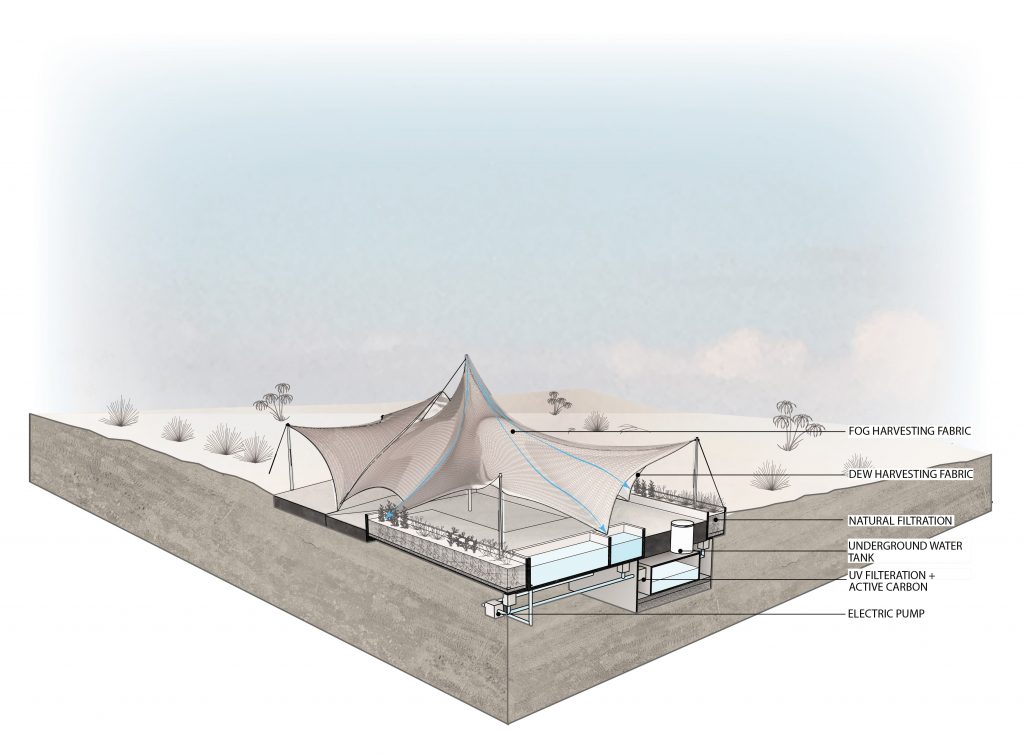International Architecture Biennale Rotterdam exhibits work by Azrieli School students
Sept 22, 2022
The work of nine Master of Architecture students is featured in the 10th annual International Architecture Biennale Rotterdam: It’s About Time in collaboration with the architectural think tank FAST (Foundation for Achieving Seamless Territory) and its founder and director Malkit Shoshan.
See project descriptions and images below.
The Azrieli School of Architecture & Urbanism students are Melissa Brady, Annette Chan, Sarah Fahmy, Natasha Lemire-Waite, Chloe Levesque, Dana Manstrangelo, Robert Oleksiak, Cameron Penney, and Connor Tamborro.
Their projects are part of an exhibit called Desert Futures: Scenarios for Decolonization.
The International Architecture Biennale Rotterdam (IABR 2022) runs from September 22 to November 13, 2022, and includes exhibits by 50 designers, artists, architects, and academics.
It asks: “how can architecture respond to socioecological urgencies by considering time as a crucial factor in the design process?” Time is an essential yet neglected parameter in designing sustainable futures.
The Carleton students produced their projects between January and April 2022 in the Options Studio Threshold Landscapes — Desert Futures, coordinated by Shoshan.
Shoshan is the founding director of FAST, an Amsterdam-and-New York-based architectural think-tank that uses research, advocacy, and design to promote social, spatial, and environmental justice, equality, and solidarity. She is also Area Head of the Art, Design, and the Public Domain Master in Design Studies at the Harvard Graduate School of Design and a visiting scholar at the Institute for Public Knowledge at New York University.
According to FAST, Desert Futures: Scenarios for Decolonization aims to spatialize and make visible the tensions between political systems and natural ecologies in desert environments, as well as human attempts to commodify the desert by dividing, fortifying, mining, extracting, militarizing, polluting, and foresting it.
The project launches with an installation about the Negev/Naqab desert, presenting a materialistic historiography of a series of selected sites, detailing their rapid colonization and offering strategies for their regenerative cohabitation through interwoven stories.
Project: Threshold Landscapes
Students: Sarah Fahmy, Natasha Lemire-Waite, Cameron Penney
Abstract:
The Negev/Naqab meets an over 245-kilometre long border with Egypt. Military buffer zones extend infrastructures by one kilometre on either side of the border. Mapping exercises uncovered various kinds of passages at several scales. These extended beyond the existing border, reaching into the Sinai Peninsula, the greater Arabian Peninsula, all the way to the Sahara Desert, showing that the interruption of borders is not definitive.
The arbitrary division of a historically continuous and unified landscape has left a visible scar along the borderline, and the region’s connective elements can no longer function as part of an ecosystem.
Threshold Landscapes proposes a border region retrofit that considers the military requirements of the area while prioritizing the biotic. The result is a flip of the military buffer zone into an ecological buffer zone with opportunities for the biotic to flourish. Interventions are explored at the scale of the border wall, the outpost, and the dune, to foster and stabilize threshold ecosystems.

Site Axonometric

Mycelium Tower
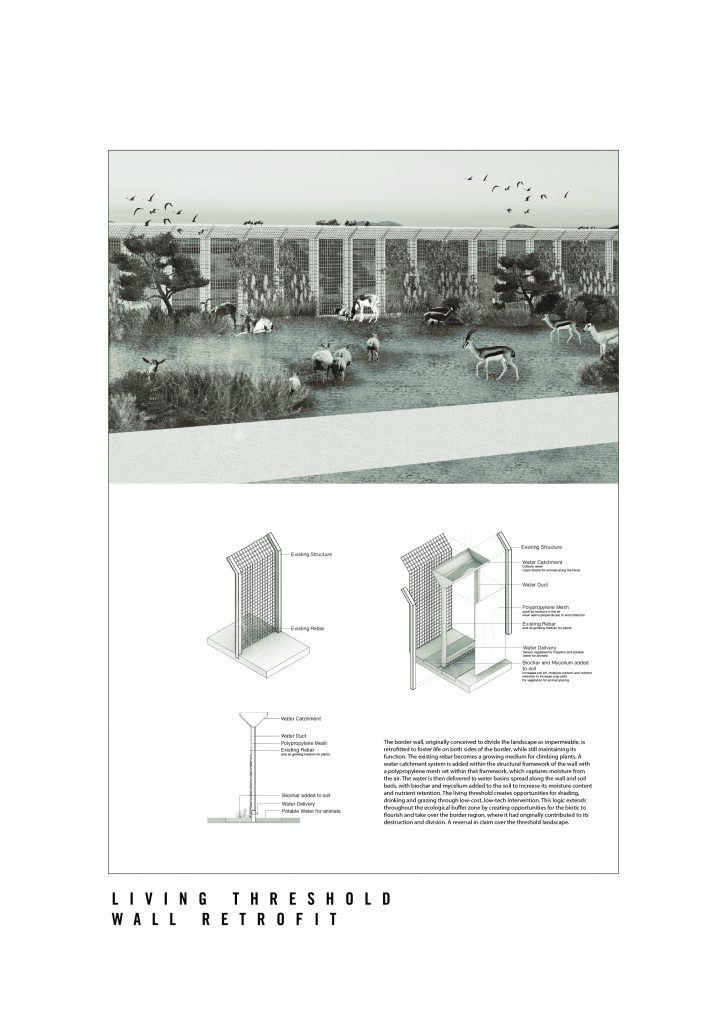
Living Threshold Wall Retrofit
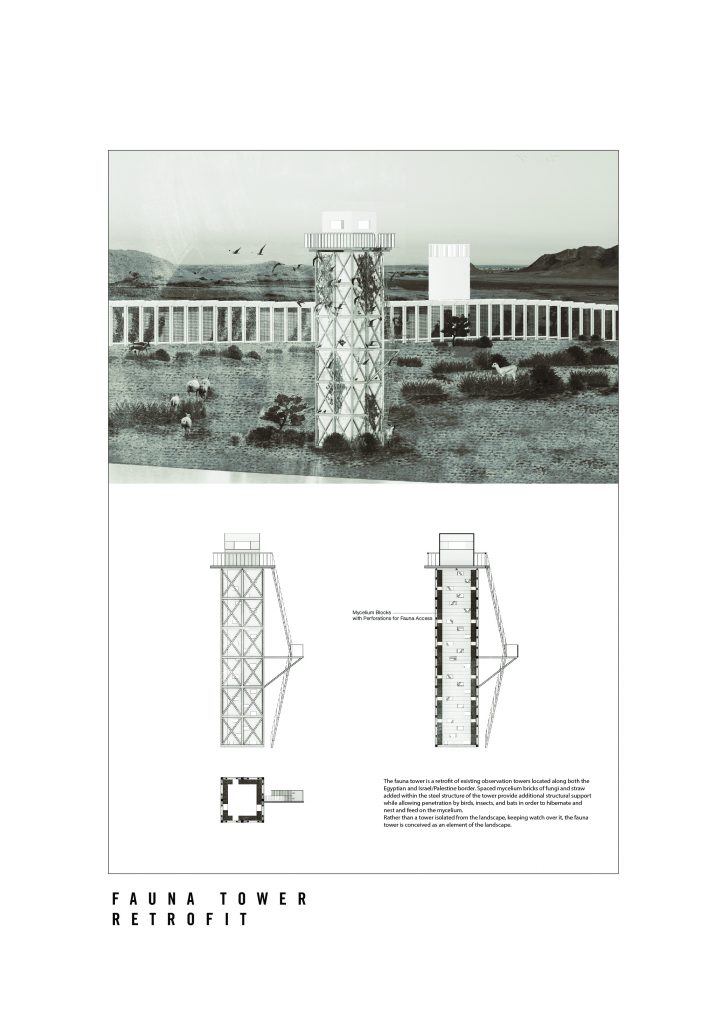
Fauna Tower Retrofit

Water Tower
Project: Rematriation: Commoning the Negev/Naqab
Students: Connor Tamborro, Robert Oleksiak, Dana Mastrangelo
Abstract:
The ideology of human separation in the Negev/Naqab to the degree to which one area blooms through fruitfulness yet the other is focused on human survival, we begin to ask why and how these can be entangled for the common good.
We propose a commoning of the Negev/Naqab as a historical counterpart to the region. The term “commoning” in our proposal enforces an organization of life, community, and evolution of groups who share the land and its resources for survival. Through commoning and caring for the land, we can imagine a shared space where a plurality of people can peacefully co-inhabit the desert and re-engage in the custodianship that the Bedouin once enacted on the landscape.
This project takes an activism approach to an architectural proposal. Rather than attributing physically to the built environments, we have proposed a deconstructive effort that combines combating the degradation of the desert and the co-inhabitancy of the individuals who choose to live within it.

The dinner party among neighbours
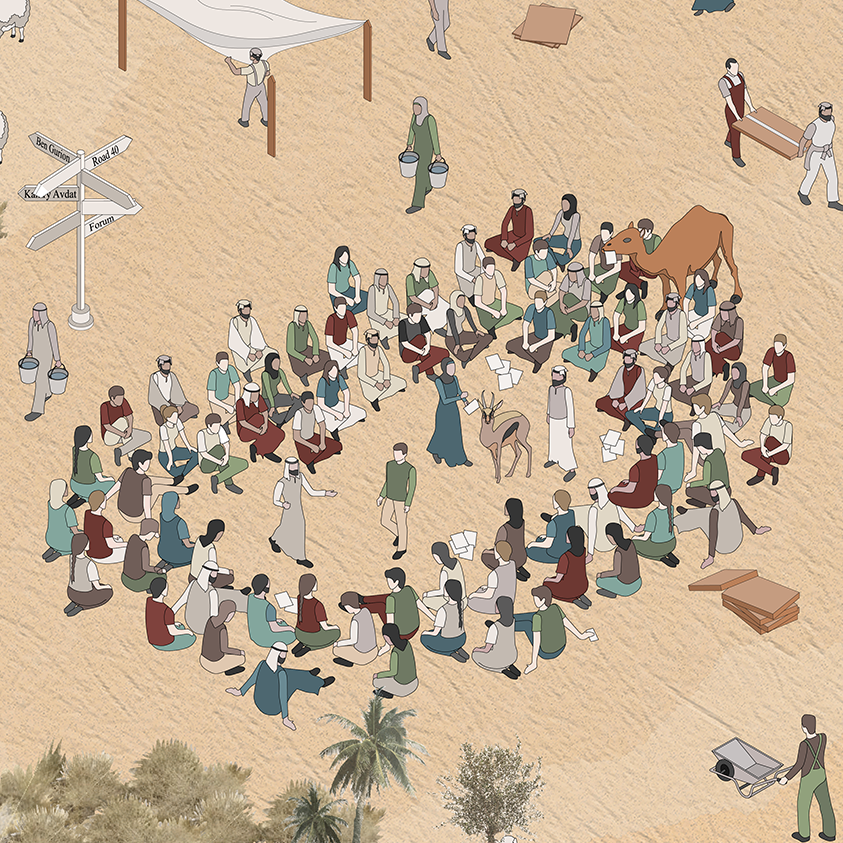
Annual forum hosted by volunteer locations within the region
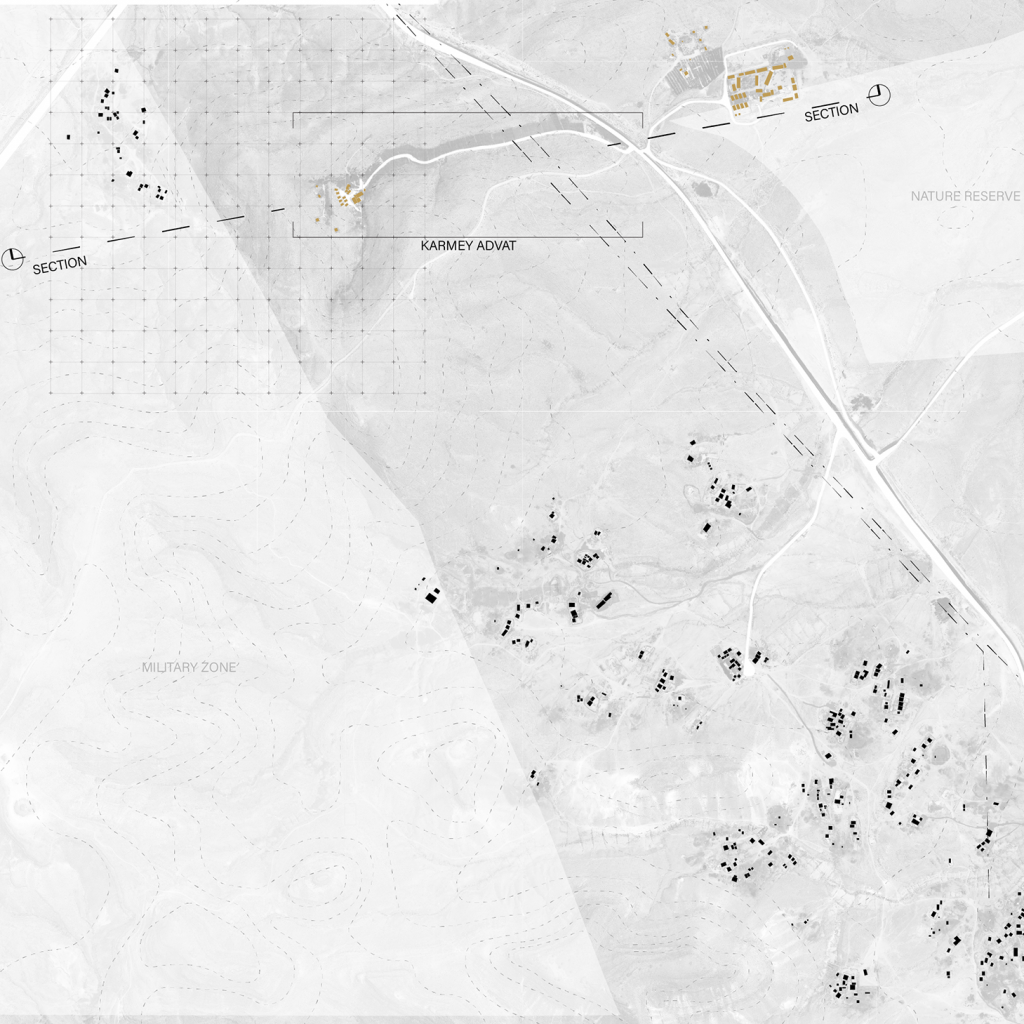
Karmey Avdat and surrounding unrecognized Bedouin villages
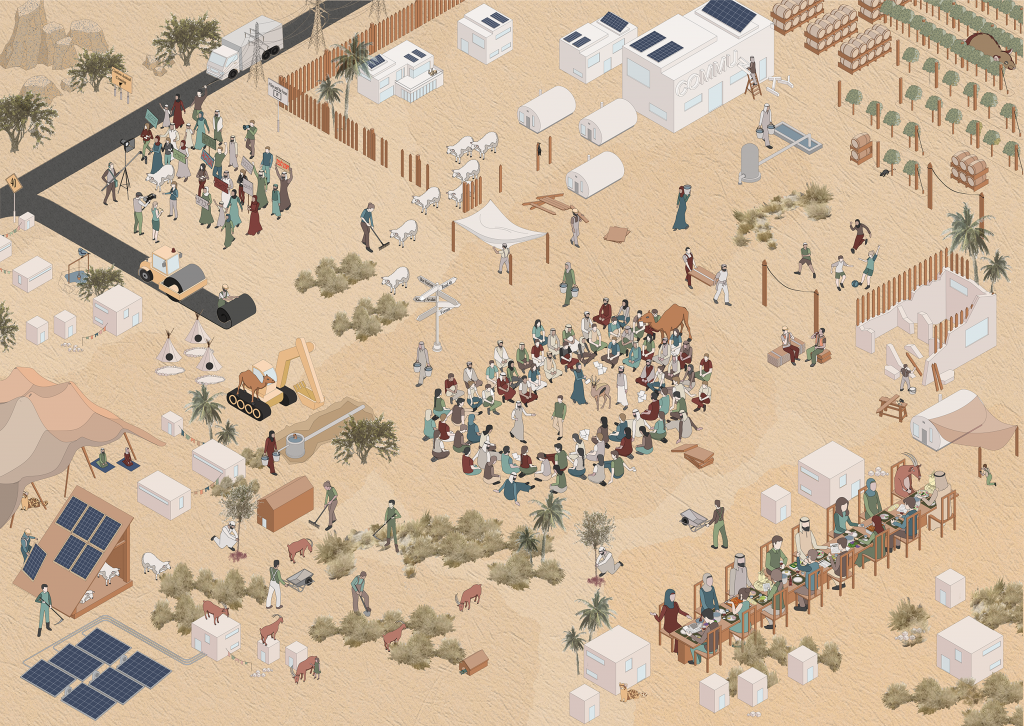
Commoning the Negev/Naqab, Narrative Atlas 02
Project: The Weaved Sanctuary
Students: Melissa Brady, Annette Chan, and Chloe Levesque
Abstract:
The intent of our project is to create a typology for a commons infrastructure — an oasis — that will bring together and create a support system for Bedouin women from unrecognized villages in the Negev/Naqab desert.
To bridge the Bedouins’ desire to remain on their land and concern for destruction of their villages, the design is a semi-permanent structure. It consists of a removable above-ground tent structure and a permanent in-ground base that hosts a gathering space, planters, and loom. Inspired by a traditional Bedouin tent, the commons typology promotes cultural traditions, including weaving, cultivating traditional plants, and the women-led construction of tents.
The semi-permanent structures are located next to existing communal places of significance to the Bedouins and their culture, such as wells and cisterns, to be easily accessible from the unrecognized villages. The tent fabric is made from a woven textile, encouraging the Bedouin women to practice their tradition of weaving through fabricating and repairing the tent. The commons typology fosters self-sufficiency and a return to the nomadic lifestyle for the Bedouin women through integrated elements, including energy collection, water harvesting, and gardening.
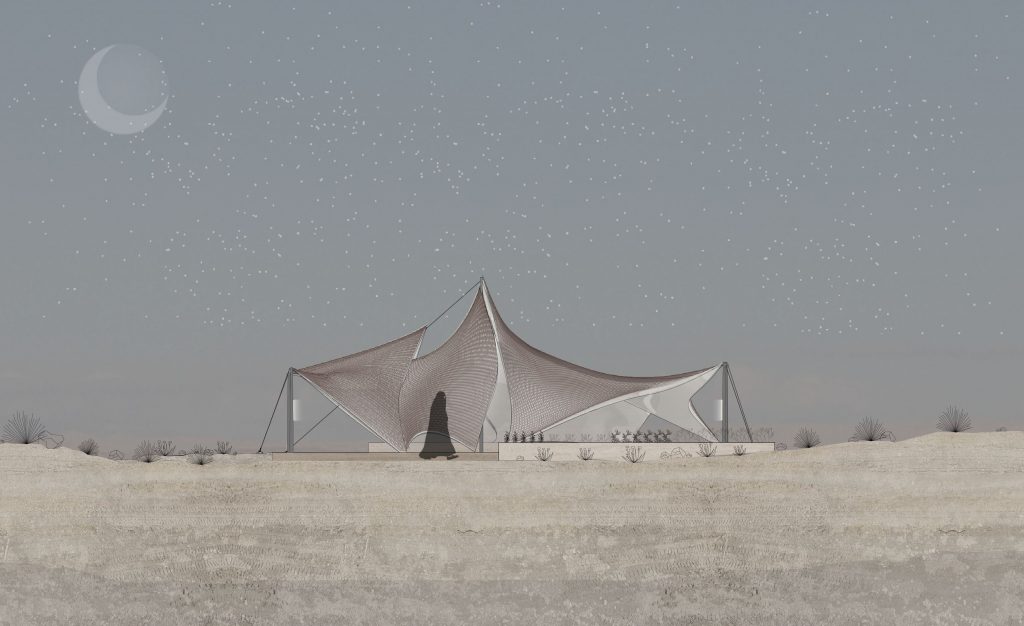
Front Elevation
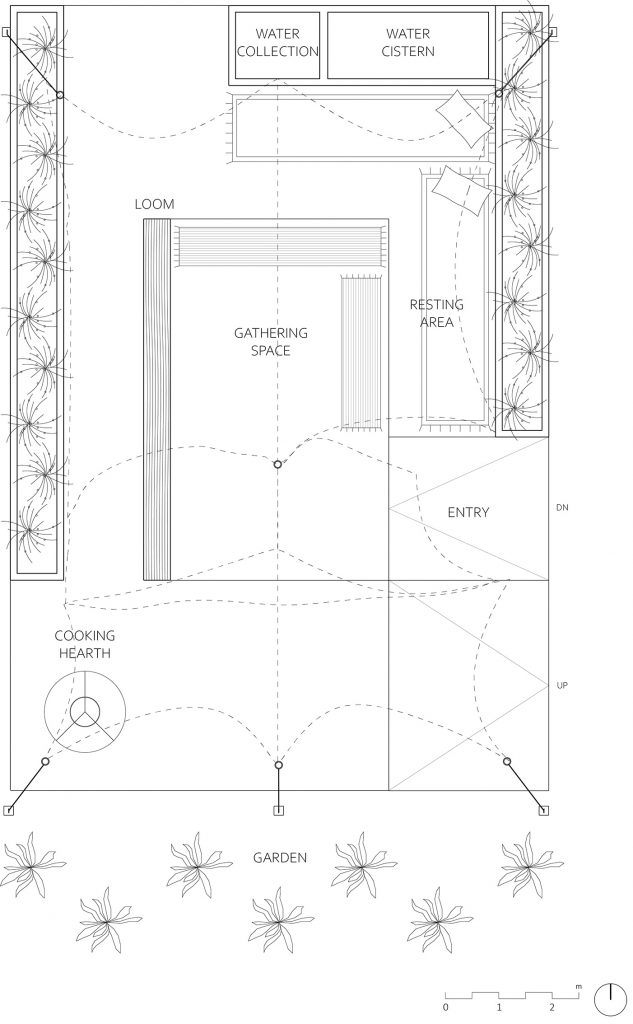
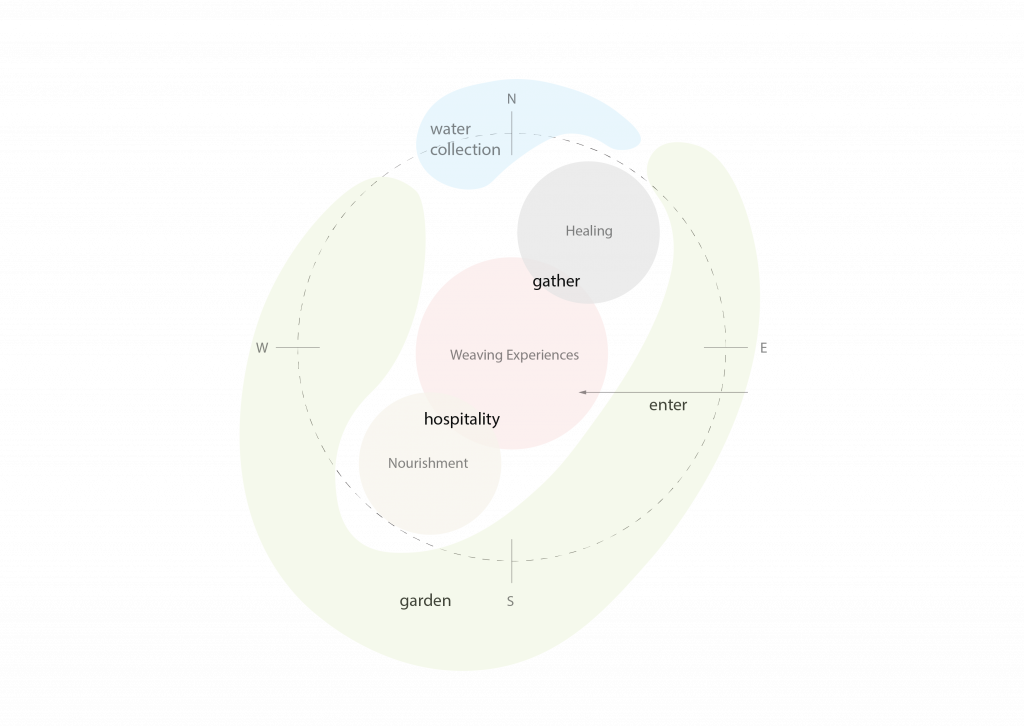
Permanent base with spaces programmed to promote hospitality, gathering, nourishment, and healing.
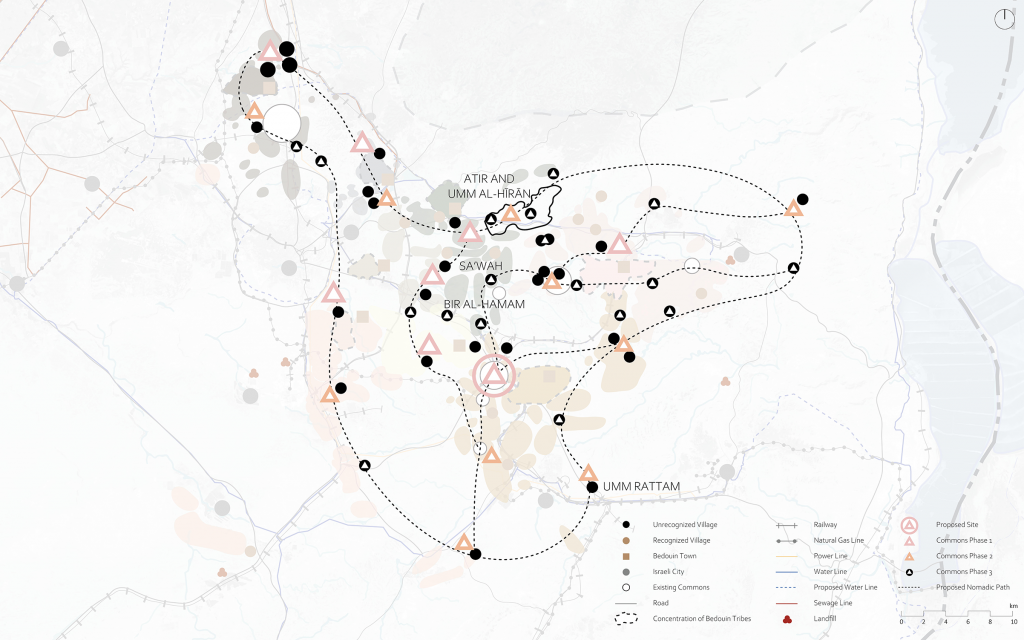
Future sites for the commons infrastructure, implemented in three phases to connect unrecognized villages around the Negev/Naqab Desert
